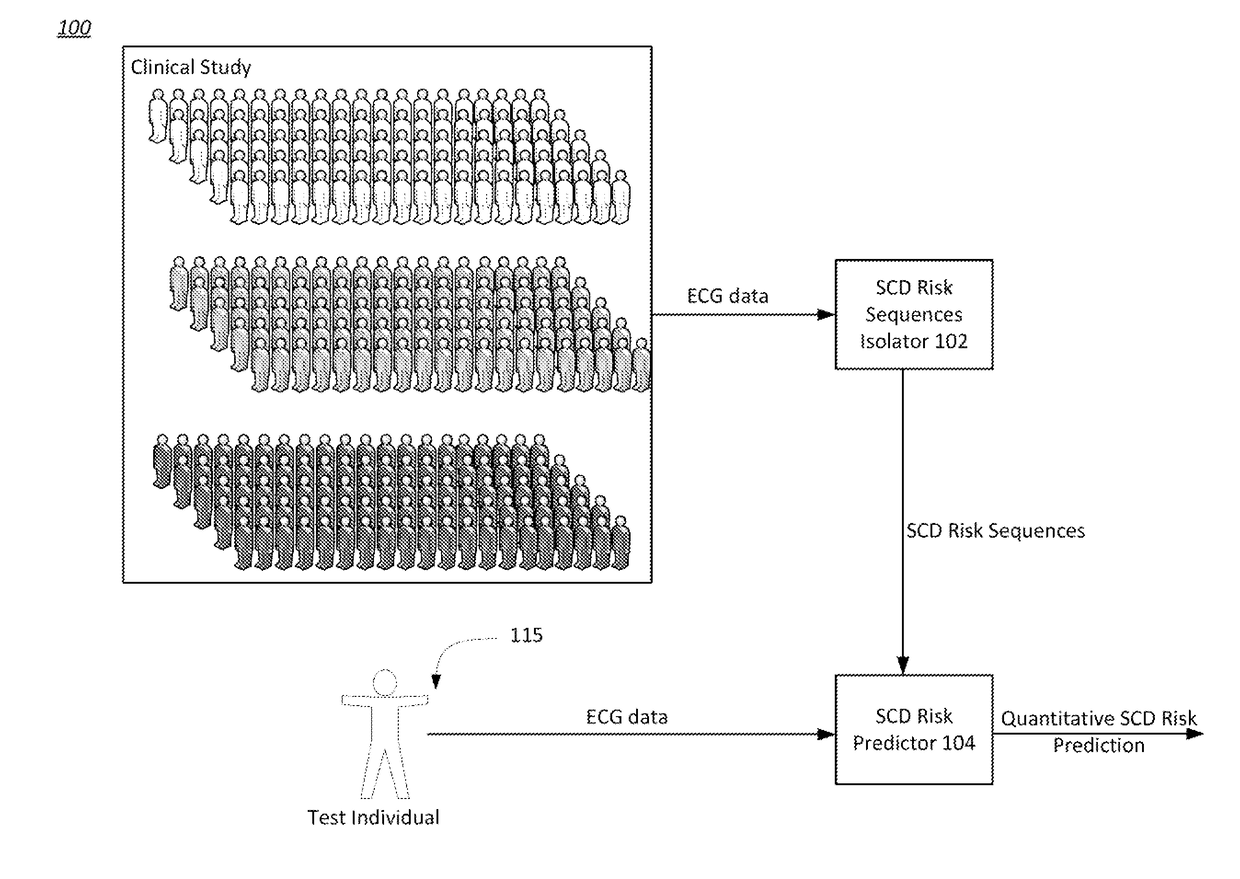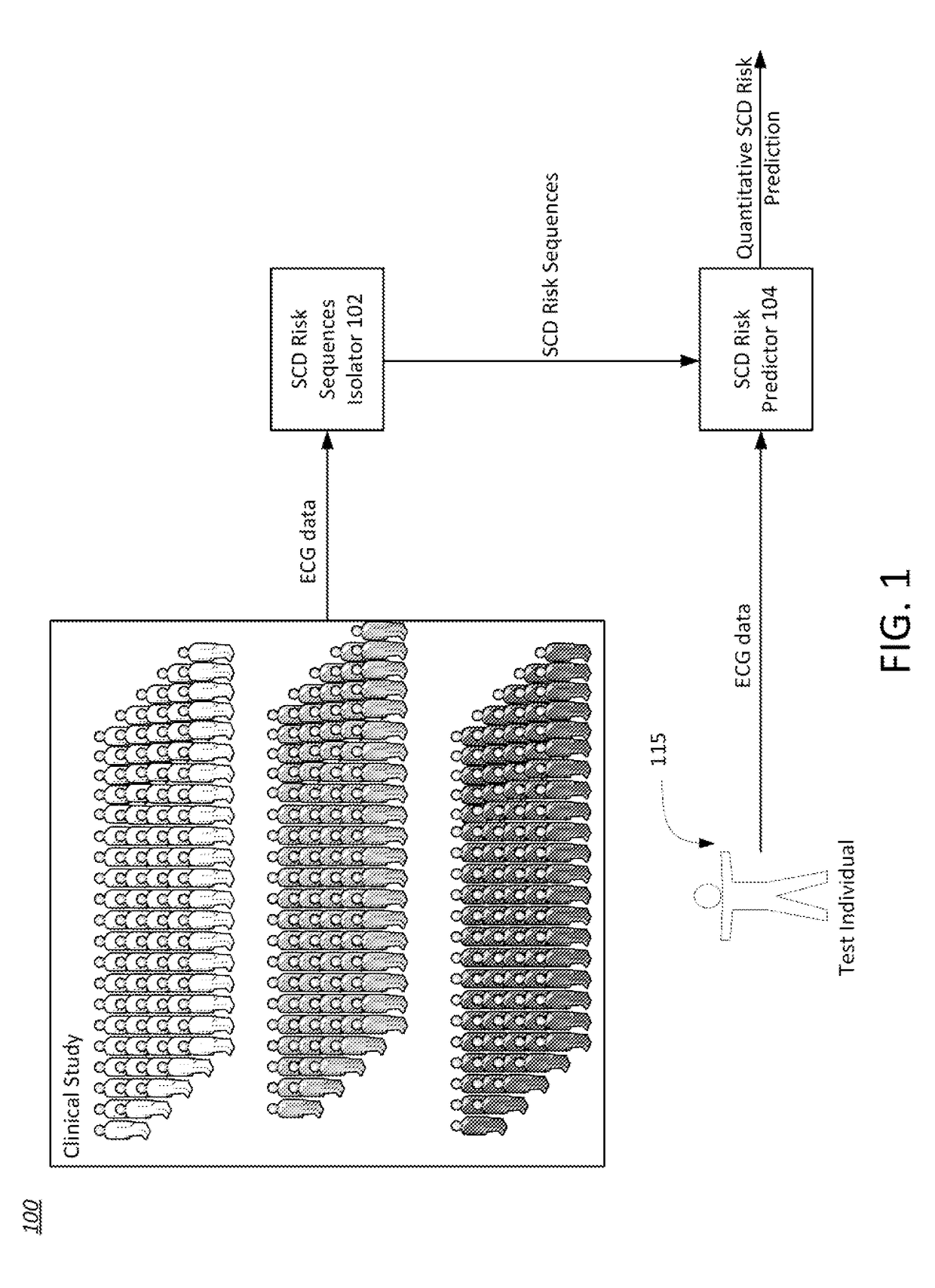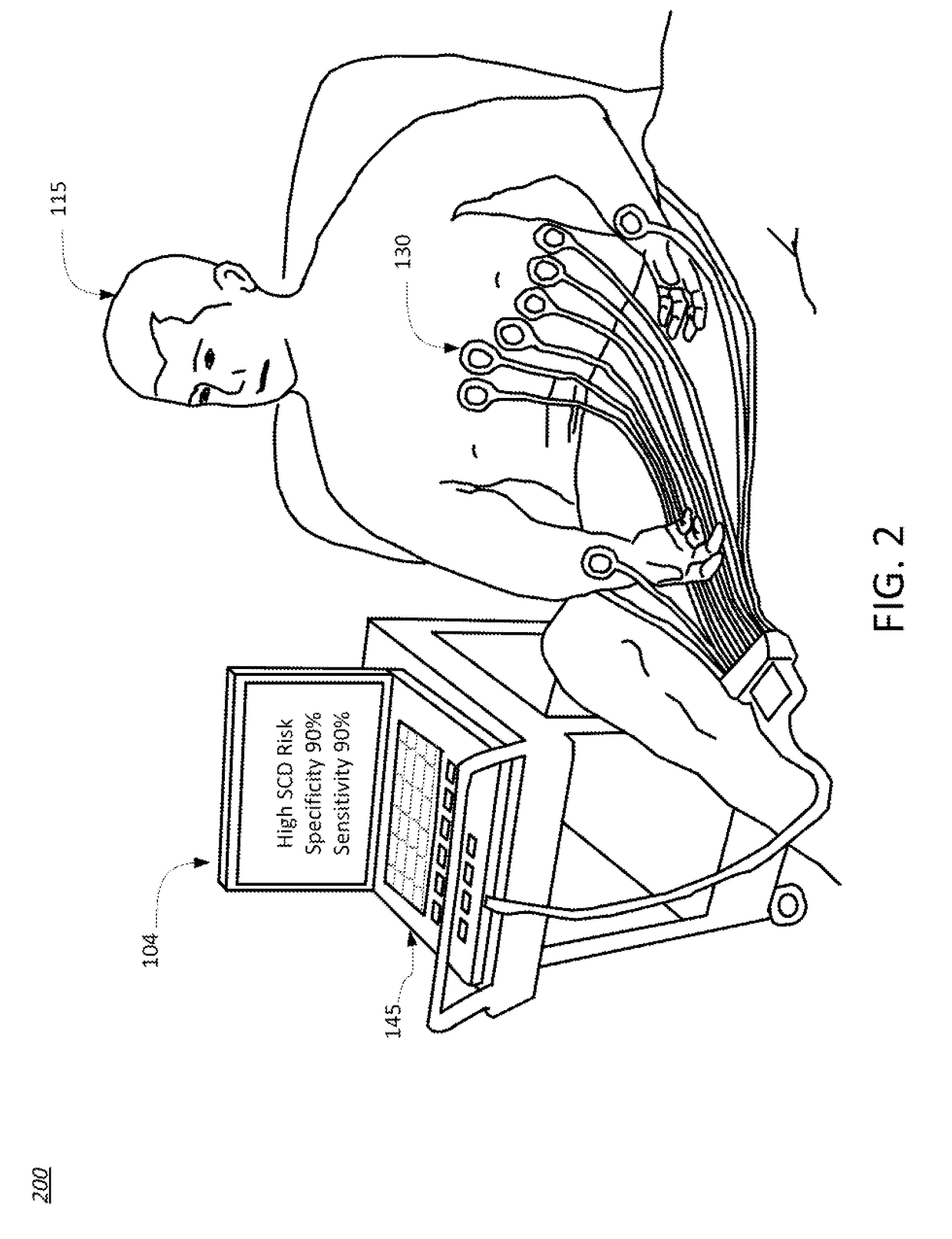Non-invasive prediction of risk for sudden cardiac death
a risk and non-invasive technology, applied in the field of quantitative identification of individuals at risk for sudden cardiac death, can solve the problems of little in terms of affecting the overall risk of scd, increase the risk of scd, and demonstrate the lack of sensitivity and specificity of contemporary methods used to stratify scd risk
- Summary
- Abstract
- Description
- Claims
- Application Information
AI Technical Summary
Benefits of technology
Problems solved by technology
Method used
Image
Examples
Embodiment Construction
[0049]Before the present technology is described in further detail, it is to be understood that the technology is not limited to the particular examples described herein, which may vary. It is also to be understood that the terminology used in this disclosure is for the purpose of describing only the particular examples discussed herein, and is not intended to be limiting.
[0050]The following description provides specific details of aspects of the technologies detailed herein. The headings and subheadings provided herein are for convenience and ease of reading only.
1. Overview
[0051]The present technology described herein generally relates to quantitatively identifying individuals at risk for Sudden Cardiac Death (SCD), which may also be termed Sudden Cardiac Arrest (SCA), using noninvasive methods. Such noninvasive mechanisms include identifying and isolating digital electrocardiogram (ECG) subsequences, which may be understood herein as measured cardiac related biopotential signals ...
PUM
 Login to View More
Login to View More Abstract
Description
Claims
Application Information
 Login to View More
Login to View More - R&D
- Intellectual Property
- Life Sciences
- Materials
- Tech Scout
- Unparalleled Data Quality
- Higher Quality Content
- 60% Fewer Hallucinations
Browse by: Latest US Patents, China's latest patents, Technical Efficacy Thesaurus, Application Domain, Technology Topic, Popular Technical Reports.
© 2025 PatSnap. All rights reserved.Legal|Privacy policy|Modern Slavery Act Transparency Statement|Sitemap|About US| Contact US: help@patsnap.com



